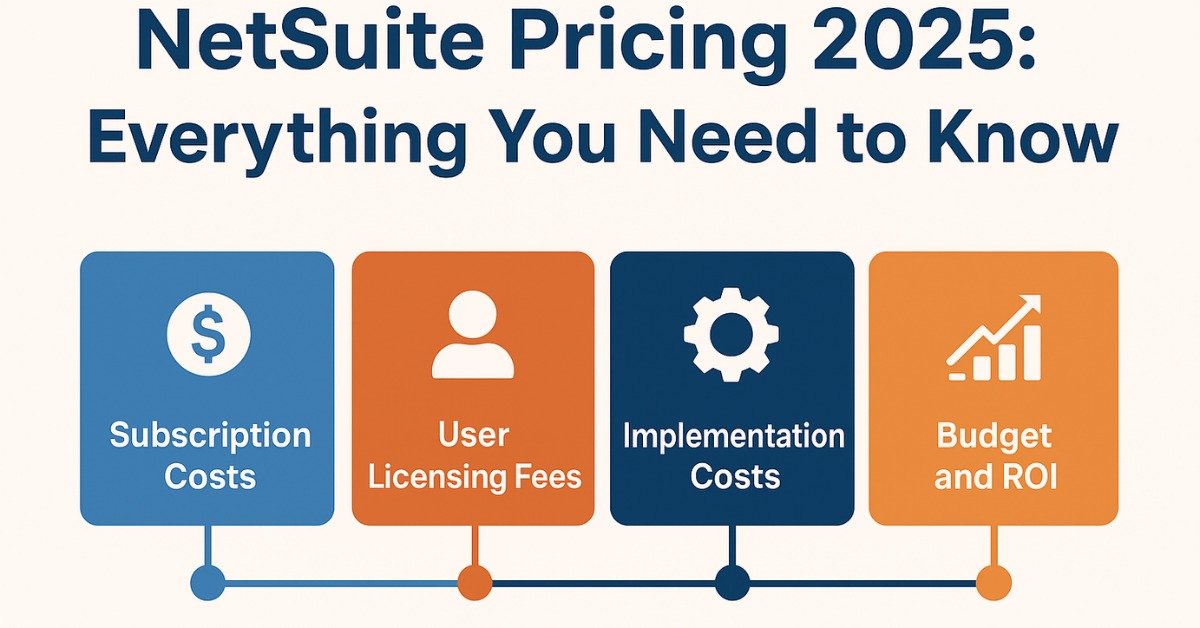Table of Contents
ToggleUnlocking Efficiency: How NetSuite Connector Transforms E-Commerce Integration
NetSuite Connector (previously referred to as FarApp) offers point integration solutions for prominent e-commerce, logistics, and point-of-sale providers, allowing organizations to automate data transfers between systems.
Business flow by NetSuite Connector
NetSuite Connector establishes connections between NetSuite and different shipping software, third-party logistics (3PLs), and carts. A particular connector makes each connection between NetSuite and the e-commerce platform possible. The import and export of transaction and item-related data between NetSuite and the e-commerce, logistics, and point-of-sale providers is made easier by the multiple syncs each connection offers.
Data is collected from one end and pushed to the other by NetSuite Connector. The storefront or NetSuite endpoints’ availability, accessibility, and integrity all affect the data flow. Syncs, which bring data into NetSuite Connector and push it to the destination at predetermined intervals, ease data transfer. This guarantees data synchronisation between NetSuite and the storefront. The data can be checked in NetSuite, the storefront, and the NetSuite Connector following a successful sync. When there is inaccurate or missing data, it helps to debug the system by understanding the data flows.
Order and Fulfil Management
Orders are exported from storefronts into NetSuite via the NetSuite Connector. The shipping information is exported from NetSuite into storefronts when products are fulfilled in NetSuite. Order transactions are correctly exported from the e-commerce channel to NetSuite thanks to the order and refund syncs. Subsequently, the fulfilment sync exports NetSuite fulfilment data to the storefront.
NetSuite Connector exports product data from NetSuite into commerce channels for inventory management. The flow of basic inventory management with NetSuite Connector is depicted in the following diagram. Syncs for inventory management make sure that the storefront’s inventory and NetSuite’s inventory correspond.
Store Fronts that are supported in NetSuite
NetSuite Connector supports the following third-party logistics (3PLs) and storefronts:
- Seller Central on Amazon
- Vendor Central on Amazon
- BigCommerce
- eBay
- Magento 2
- The Shipstation
- Shopify
- Shopify Point of Sale
- Walmart
- WooCommerce

NetSuite Connector Data Management
Data management in the NetSuite Connector is critical to ensuring accurate and seamless information flow across linked systems. Businesses can map data fields between NetSuite and other apps with the connection to ensure consistent and accurate data translation across platforms. This mapping is crucial for preserving data integrity and reducing errors that could arise from differences in data interpretation. Additionally, the link offers data transformation capabilities that enable businesses to modify data formats to satisfy the specific requirements of different systems.
The NetSuite Connector’s ability to automate data synchronization is an important aspect of data management. By guaranteeing that data is updated in real time across all linked systems, the connector reduces the likelihood of faulty or outdated information and eliminates the need for manual data entry. This real-time synchronization allows for the maintenance of reliable records in instances where quick decisions must be made based on the most recent information. Overall, the NetSuite Connector’s data management capabilities help businesses maintain high levels of data accuracy, which leads to better decision-making and more efficient operations.
Connector Userface by NetSuite
The NetSuite Connector’s user interface (UI) is designed to be simple to use and intuitive, allowing people with varying technical skills to utilize it. Because of the interface’s simple navigation, users may quickly establish and manage connections between NetSuite and other systems. Businesses may adopt the connector with little training because of the UI’s user-friendly design and straightforward options, which remove the complexity frequently associated with managing data flows and automations.
Additionally, the NetSuite Connector UI gives users real-time visibility into their data integration operations through customisable dashboards and reporting capabilities. These functionalities enable enterprises to keep an eye on the condition of their integrations, measure the effectiveness of their automated workflows, and promptly detect any potential problems. Businesses can effectively manage their integrations without being hindered by technological issues thanks to the NetSuite Connector’s user-friendly interface and robust monitoring capabilities.

User Event Scripts in NetSuite
The NetSuite Connector’s User Event Scripts are essential for automating and modifying business procedures. These scripts let users respond to certain events in NetSuite with custom logic. Examples of these events include the creation, update, and deletion of records. Businesses may make sure that their procedures are effective and uniform by using User Event Scripts to automate actions like delivering notifications, updating associated records, and applying data validation criteria.
Companies can adapt the NetSuite Connector to meet their specific needs thanks to the flexibility of User Event Scripts. These scripts, for example, can be used by an organization to handle data syncing between NetSuite and other linked systems, ensuring that all platforms display up-to-date information. This kind of flexibility increases the connector’s functionality and, ultimately, leads to better accuracy and efficiency across all of their systems by allowing businesses to develop workflows that closely match their operational requirements.
NetSuite Connector Authentication
The NetSuite Connector relies heavily on authentication to guarantee secure data transfers across systems and restricted access to sensitive data to only authorized users. Many authentication methods, such as token-based authentication, which is a safe way to authenticate users without disclosing their credentials, are supported by the connection. This tactic lowers the risk of unauthorized access by using often refreshed tokens, which enhances security.
Moreover, the authentication procedures of the NetSuite Connector are designed to integrate seamlessly with an organization’s current security infrastructure. Multi-factor authentication (MFA) and adherence to industry standards such as OAuth are examples of this. Strong authentication measures are added by the NetSuite Connector to protect data flows across systems, guaranteeing the integrity and security of crucial corporate data.
NetSuite Third Party Listing
A number of third-party apps, the use of which need licensing agreements, can be integrated with the NetSuite Connector. Businesses may easily connect and use their licensed software alongside NetSuite by managing these third-party licenses through the NetSuite Connector. In order to avoid unauthorized usage and guarantee that companies fulfill their contractual commitments, the connector makes sure that all integrations adhere to the conditions of these licenses.
Furthermore, by giving companies a unified platform to track and manage their third-party software agreements, the NetSuite Connector streamlines the process of managing various licenses. This centralization lessens the administrative load of handling several software licenses and assists companies in adhering to licensing requirements.
Disclaimer:
The logos used on this website are the property of their respective owners. These logos are provided for informational purposes and to represent the entities or organizations mentioned in the content. Their inclusion does not imply any affiliation or endorsement unless specifically stated.We make no claim of ownership to the logos nor do we assert any right over them. Any use of third-party logos is purely for illustrative purposes. If you are a representative of the entity whose logo appears and wish for it to be removed, please contact us directly and we will promptly comply with your request.



